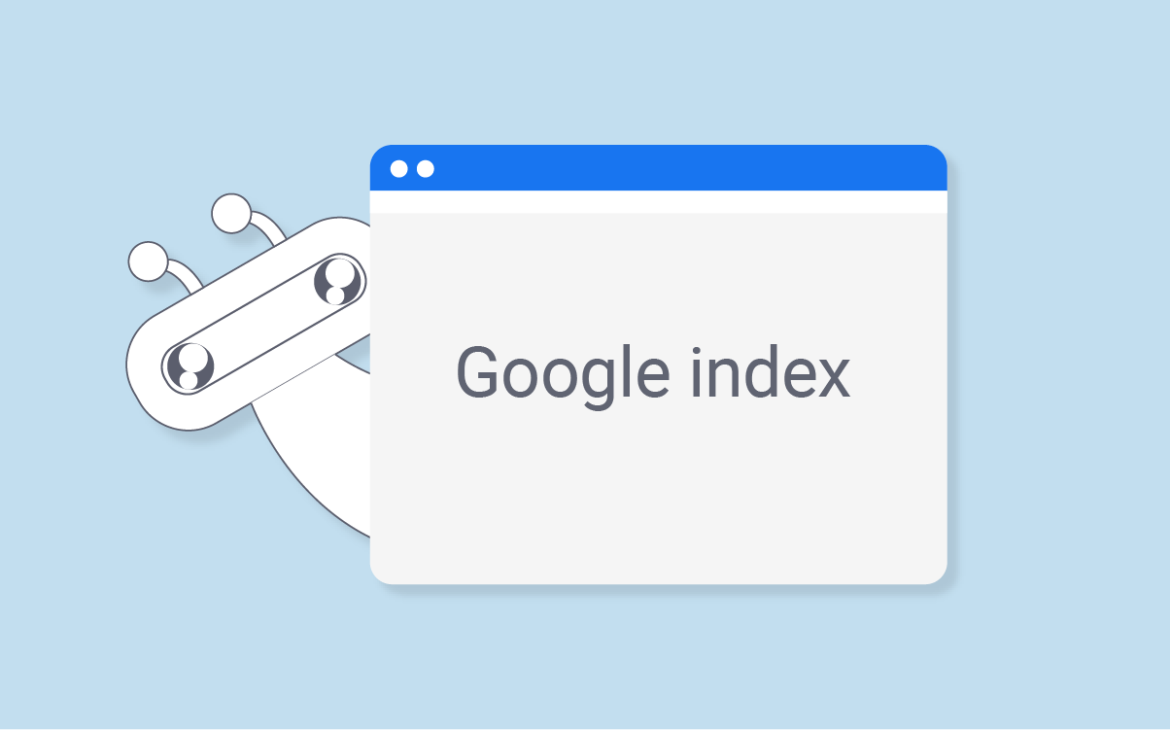Fix Google Indexing Problems on Your Business Website
Proper indexing is crucial for the success of any business website. When search engines like Google, Bing, or Yahoo index a website, they analyze and store information about its content, making it searchable for users. However, indexing problems can hinder this process, causing detrimental effects on the website’s performance and visibility in search results. In this article, we will explore common indexing issues that businesses face, understand their impact, and provide best practices and solutions to fix these problems. By addressing and resolving indexing issues, businesses can ensure that their website is effectively crawled, indexed, and ranked by search engines, ultimately driving organic traffic and boosting online presence.
1. Introduction to Indexing Problems on Business Websites
What is Website Indexing?
Website indexing is like the Dewey Decimal System for the internet. Search engines use indexing to organize and categorize the vast amount of information available online. When your website is indexed, it means search engines have explored its pages and added them to their database. This helps your site appear in search results when people look for relevant information.
Importance of Proper Indexing for Business Websites
Proper indexing is crucial for business websites because it determines how easily prospective customers can find you online. If search engines can’t index your site effectively, it’s like hiding your business card in a drawer – nobody will see it. Good indexing ensures that your website shows up in search results, driving traffic to your business and increasing visibility.
2. Common Indexing Issues and Their Impact on Website Performance
Duplicate Content and Indexing Problems
Imagine having different versions of your website’s pages scattered all over the internet. Search engines get confused, and it hurts your indexing. Duplicate content can arise from technical glitches, multiple URLs for the same page, or content syndication. It’s important to identify and fix these issues to avoid diluting your website’s visibility and ranking.
Broken Links and Their Effect on Website Indexation
Broken links are like dead-end streets on your website. Search engines follow these links to find and index your content. But if they encounter broken links, it’s like hitting a dead end, and your precious content remains hidden. Regularly check for and fix broken links to ensure search engines can crawl your site properly.
Slow Website Speed and Indexing Challenges
Speed matters in the online world, and search engines know that. If your website takes forever to load, search engine crawlers may abandon the indexing process, resulting in incomplete or inaccurate indexing. Optimize your site’s speed by compressing images, using caching techniques, and minimizing unnecessary code. This improves user experience and indexing.
3. Best Practices for Optimizing Website Indexing
Conducting a Comprehensive Website Audit
Just like a medical check-up, a website audit helps identify underlying issues affecting your indexing. Use tools like Google Search Console or third-party SEO audits to identify potential problems such as duplicate content, broken links, or slow loading times. Fixing these issues boosts your site’s indexability and overall performance.
Improving Website Architecture for Better Indexation
A well-structured website architecture makes it easier for search engines to navigate and index your pages. Use clear and logical site navigation, organize content into categories and subcategories, and create a sitemap. This ensures search engines can easily discover and crawl your website, improving its overall indexation.
Optimizing Meta Tags and Descriptions for Improved Indexing
Meta tags and descriptions provide valuable information to search engines about your web pages. Make sure to include relevant keywords and concise, compelling descriptions that accurately represent each page’s content.
4. Understanding Crawl ability and Ensuring Search Engine Accessibility
The Role of Search Engine Crawlers in Website Indexing
Search engine crawlers are like tiny, virtual explorers that crawl through the vast web, discovering and indexing websites. Understanding how these crawlers work is essential for optimizing your website’s indexation. By ensuring your site is accessible to these crawler bots, you increase your chances of appearing in search results.
Enhancing Crawlability with a Well-Structured Site Navigation
Remember those clear and logical site navigation we talked about earlier? Besides aiding indexation, they also make it easy for search engine crawlers to navigate your website. A well-structured navigation system ensures that all your important pages are discoverable and indexed, leading to better visibility in search results.
HTML and XML Sitemaps for Effective Indexing
Sitemaps act as roadmaps for search engine crawlers, showing them all the important pages on your website. HTML sitemaps help users navigate your site, while XML sitemaps are specifically designed for search engines. Including both types of sitemaps ensures that search engine crawlers can efficiently index your website and understand its structure.
Remember, keeping your website properly indexed is like having a well-maintained storefront that attracts customers. By addressing common indexing problems and implementing best practices, you increase your chances of driving organic traffic and boosting your business’s online presence. So roll up your sleeves and get to work fixing those indexing issues!improving website indexing performance
- Regularly checking crawl errors and addressing them promptly
- Monitoring indexation status and identifying potential issues
- Analyzing search engine rankings and adjusting strategies accordingly
If you want to build your website in an affordable price contact: www.nextr.in

5.Resolving Technical Issues that Hinder Proper Website Indexing
Dealing with Server Errors and HTTP Status Codes
When it comes to website indexing, server errors and HTTP status codes are like speed bumps on the information superhighway. These technical issues can hinder search engine crawlers from properly indexing your website. So, it’s crucial to tackle them head-on. Fix those 404 errors and other pesky server errors to ensure your content gets the attention it deserves.
Handling JavaScript-Rendered Content for Search Engine Indexing
JavaScript does wonders for making websites more interactive and user-friendly. However, search engine bots don’t always play well with JavaScript. That means your fancy JavaScript-rendered content might go unnoticed by search engines. To fix this, make sure you provide alternative HTML versions of your content or use server-side rendering techniques to ensure search engines can properly index your pages.
Troubleshooting Issues with Canonical Tags and Redirects
Canonical tags and redirects help search engines understand the preferred version of your web pages. However, misconfigurations or errors in implementing these can confuse search engines and lead to indexing issues. So, double-check your canonical tags and redirects to ensure they are guiding search engine crawlers in the right direction.
6. Utilizing XML Sitemaps and Robots.txt to Improve Indexing Efficiency
Creating and Submitting an XML Sitemap to Search Engines
An XML sitemap acts as a roadmap for search engine crawlers, guiding them to important pages and helping them understand your website’s structure. By creating and submitting an XML sitemap to search engines, you make their job a whole lot easier. It’s like giving them a GPS to navigate your website and index it more efficiently.
Configuring Robots.txt to Guide Search Engine Crawlers
Robots.txt is like the bouncer at the entrance of your website, deciding which pages search engine crawlers should and shouldn’t access. By properly configuring robots.txt, you can guide search engine crawlers to focus on the pages that matter most, while keeping sensitive or duplicate content hidden from their prying eyes.
Limiting Access to Non-Indexable Parts of the Website
Some parts of your website may not be suitable for indexing, like private login pages or excessive duplicate content. To prevent search engine crawlers from wasting their time on these areas, consider using “noindex” tags or password protection to keep them out.
7. Enhancing Content Structure for Better Indexation and Ranking
Organizing Content into Logical Sections with Headers
Imagine reading a book with no chapter titles or headings—it would be a confusing mess. The same goes for your website content. By organizing your content into logical sections with headers, you make it easier for search engine crawlers to understand the context and hierarchy of your information, leading to better indexation and, ultimately, higher rankings.
Utilizing Structured Data Markup for Rich Search Results
Structured data markup is like dressing up your website content in fancy attire. It provides extra information to search engines, enabling them to display rich search results like ratings, reviews, and other eye-catching details. By implementing structured data markup, you make your web pages more appealing to both search engines and users.
Optimizing Images and Media Files for Better Indexing
A picture is worth a thousand words, but search engines need a little help to understand what those words are. By optimizing your images and media files with descriptive alt tags, captions, and proper file names, you make them more searchable and increase the chances of them appearing in image search results.
8. Monitoring and Improving Website Indexing Performance
Regularly Checking Crawl Errors and Addressing Them Promptly
Just like a house with leaky pipes, a website with crawl errors is not a pleasant experience. Regularly checking for crawl errors and promptly addressing them ensures that search engine crawlers can navigate your website without getting stuck in dead ends or encountering broken links.
Monitoring Indexation Status and Identifying Potential Issues
Keeping an eye on your website’s indexation status helps you stay informed about which pages are being properly indexed and which might be falling through the cracks. If you notice any significant drops or issues, investigate them further to identify potential problems and take corrective actions.
Analyzing Search Engine Rankings and Adjusting Strategies Accordingly
Search engine rankings can give you valuable insights into the effectiveness of your indexing strategies. Analyze your rankings regularly and adjust your SEO tactics accordingly. Whether it’s fine-tuning your keywords, optimizing your metadata, or improving your content, staying on top of your rankings can help you stay ahead in the competitive online landscape.
Conclusion
Addressing indexing problems on your business website is essential for maximizing visibility and attracting organic traffic. By implementing best practices such as optimizing website architecture, resolving technical issues, utilizing XML sitemaps and robots.txt, and enhancing content structure, you can improve the indexing efficiency and overall performance of your website. Remember to regularly monitor and maintain your website’s indexing performance to ensure long-term success. By taking proactive steps to fix indexing problems, you can enhance your online presence, increase search engine visibility, and ultimately drive more valuable traffic to your business website.

FAQ
1. What are some common signs of indexing problems on a business website?
Common signs of indexing problems include a significant drop in organic search traffic, pages not appearing in search results, outdated or incorrect content appearing in search results, and a lack of visibility for important keywords. Monitoring website analytics and regularly checking search engine index status can help identify these issues.
2. How can duplicate content affect website indexing?
When search engines encounter duplicate content, they may struggle to determine which version to index or may index only one version, resulting in lower visibility for the affected pages. Resolving duplicate content issues through canonicalization or URL consolidation can help improve website indexing.
3. Why is website crawlability important for indexing?
Crawlability refers to the ability of search engine crawlers to access and navigate a website’s pages. If a website is not easily crawlable, search engines may struggle to discover and index its content properly. By optimizing website crawlability through a clear site structure, internal linking, and a well-organized XML sitemap, businesses can ensure that search engine crawlers can efficiently index their website.
4. How frequently should website indexing performance be monitored?
Website indexing performance should be monitored regularly to identify any potential issues and take corrective actions promptly. It is recommended to monitor indexing performance at least once a month, but more frequent monitoring, especially after implementing changes or updates to the website, can provide better insights into the impact of those changes on indexing.
If you want to build your website in an affordable price contact: www.nextr.in
Read this: Site Improvement Organization In Delhi


















